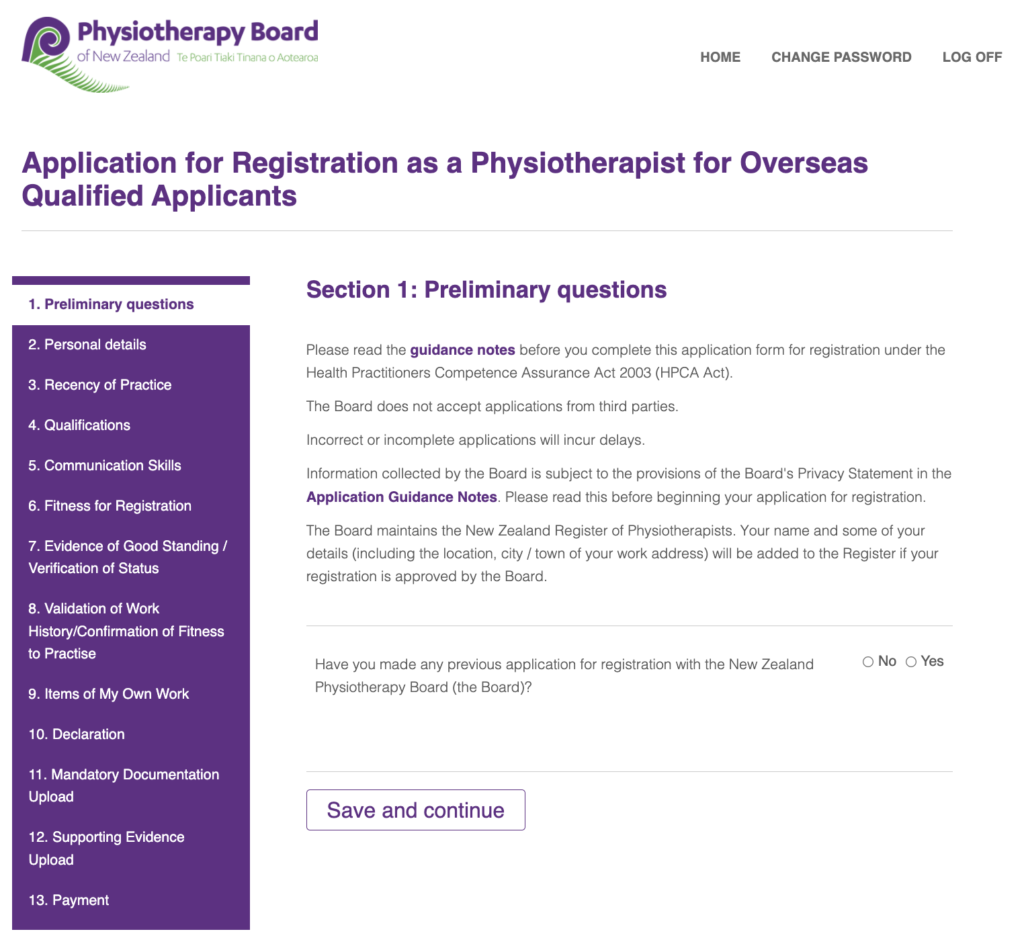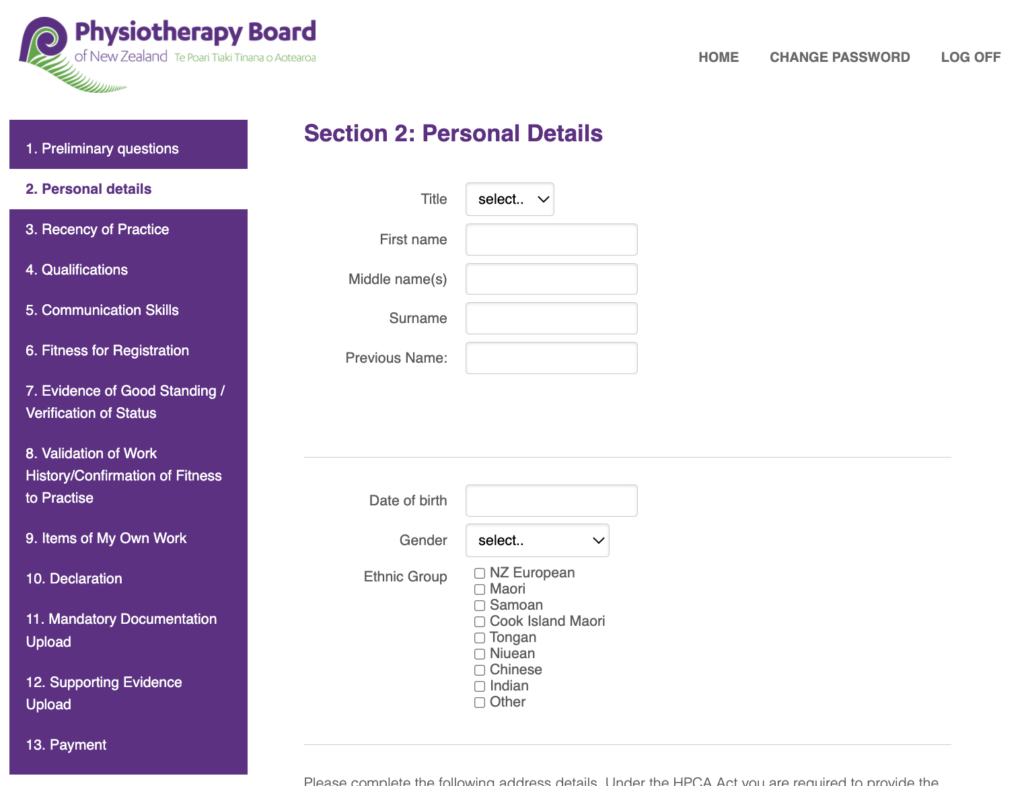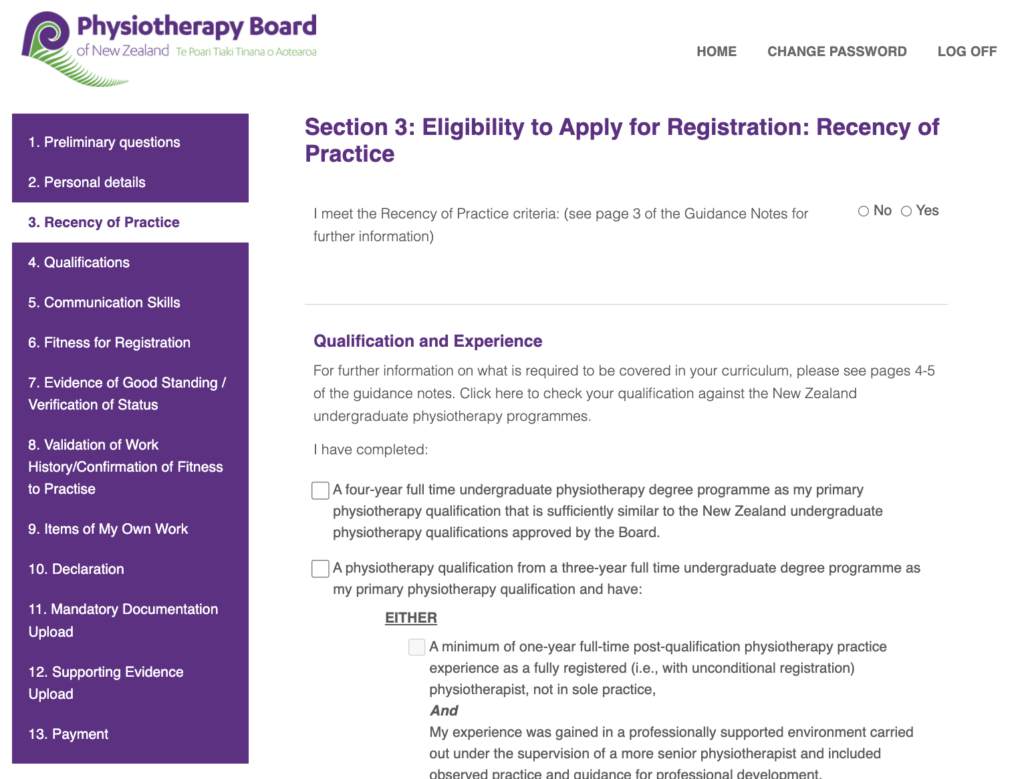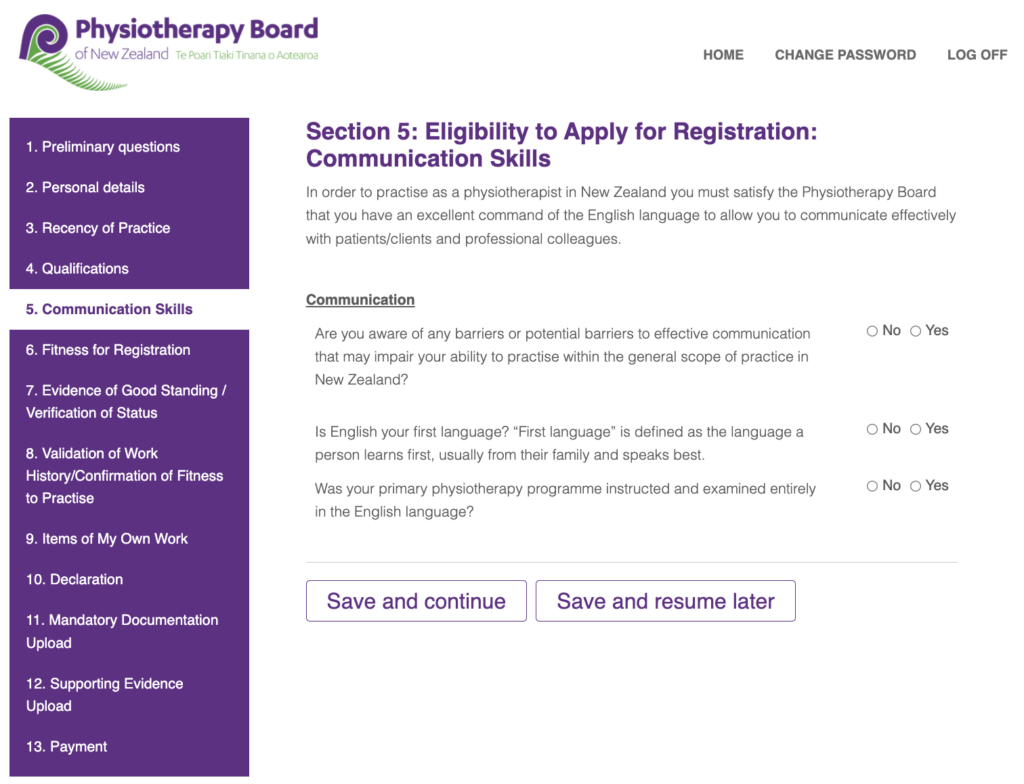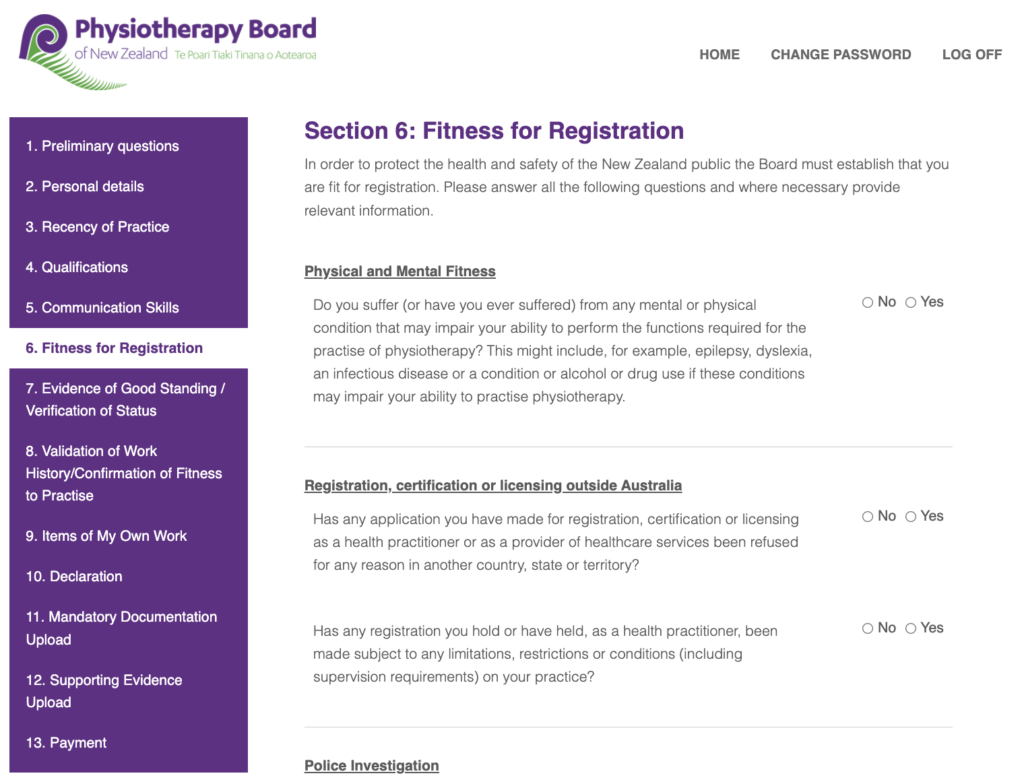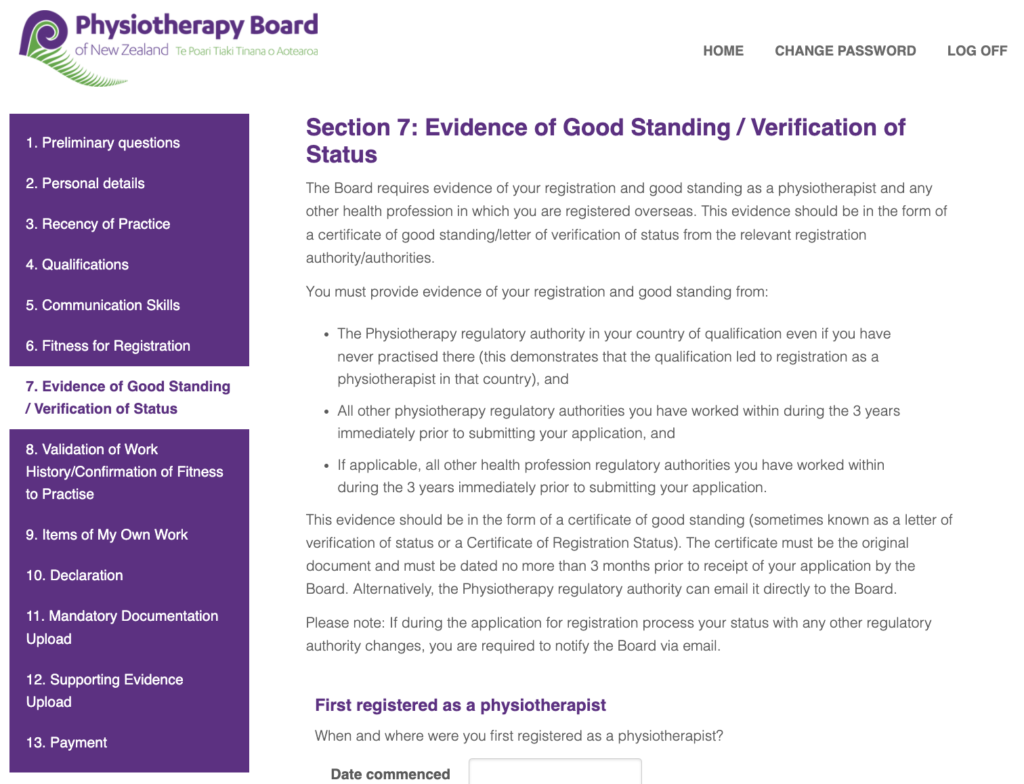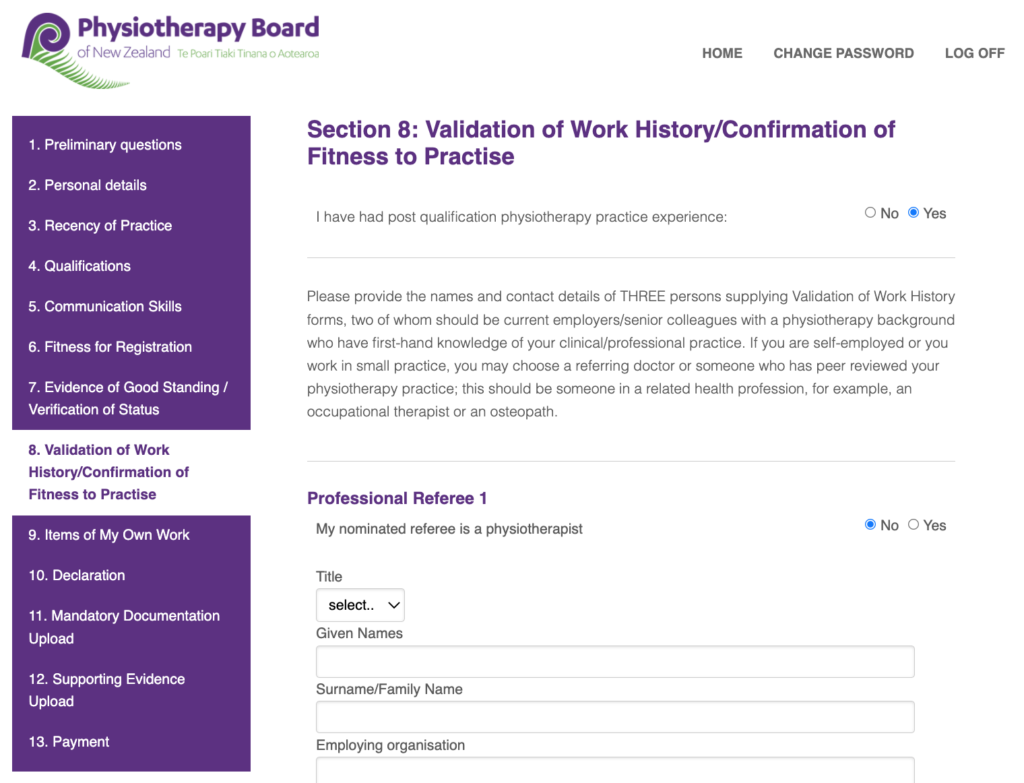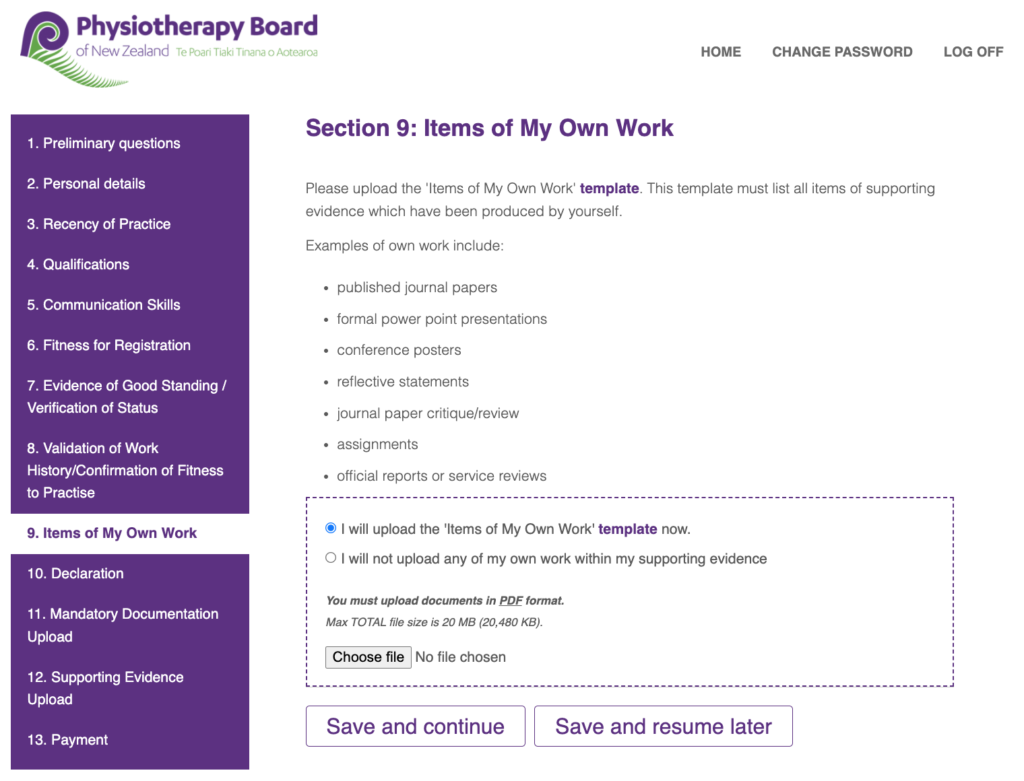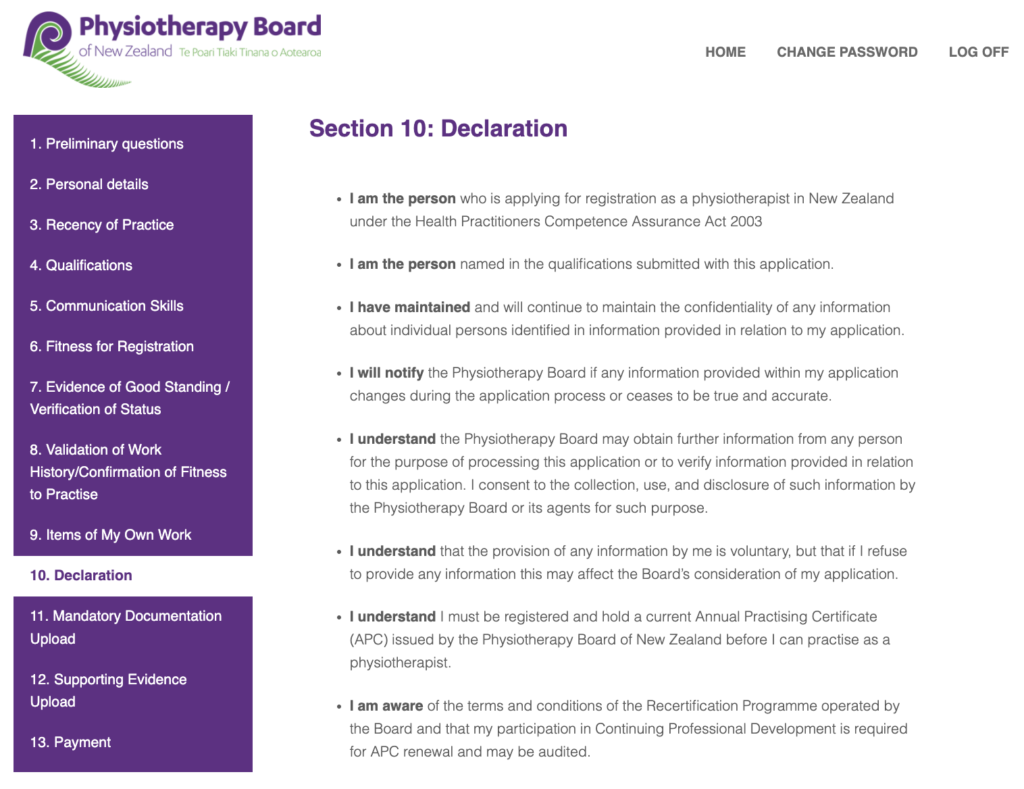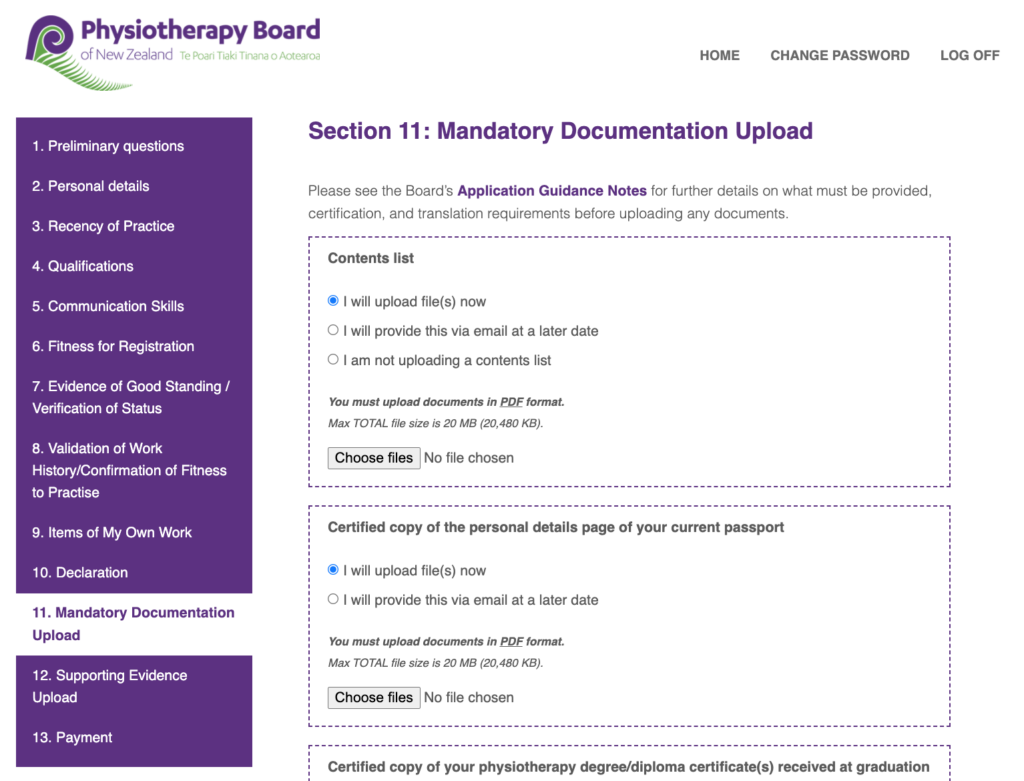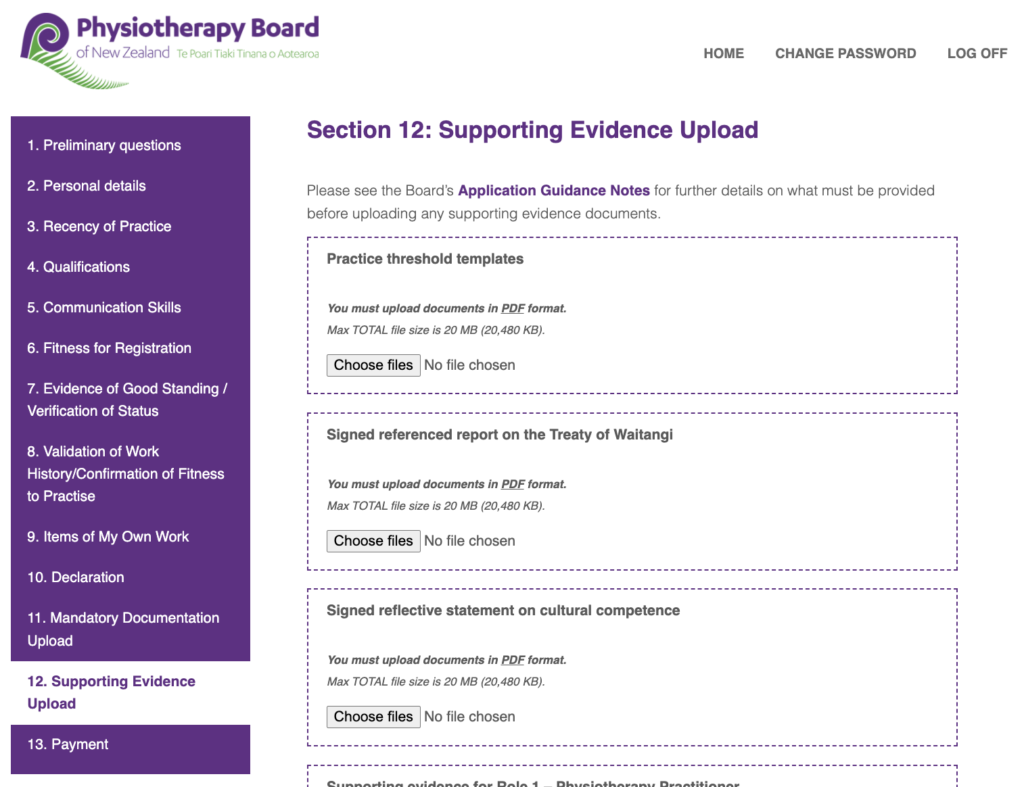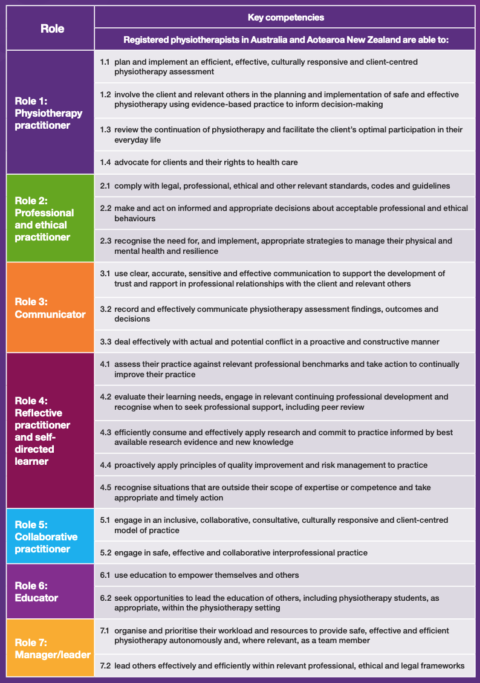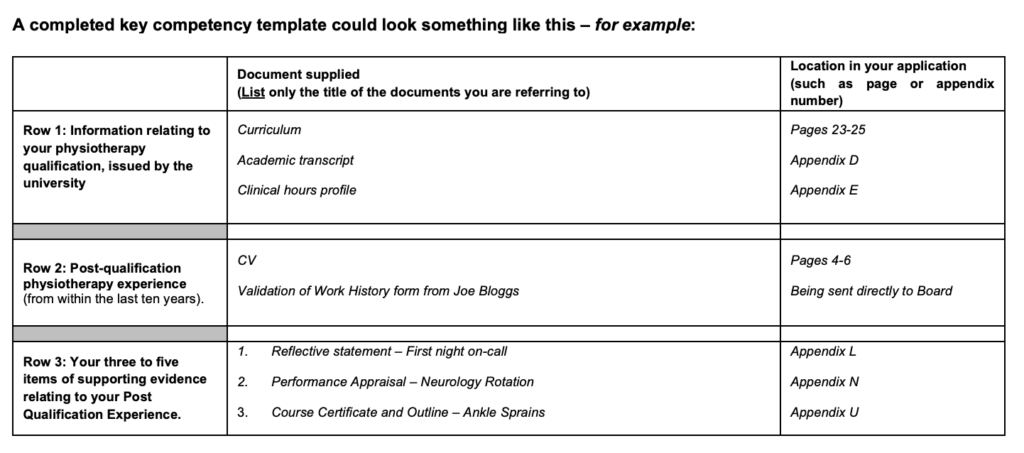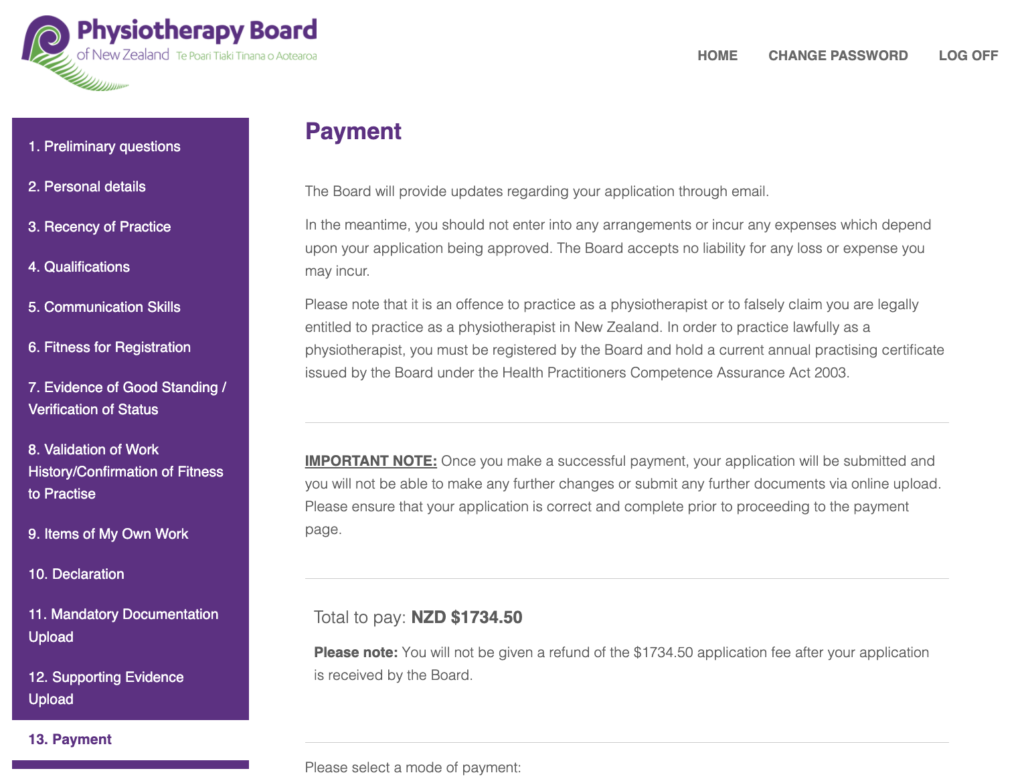** BEFORE YOU START**
This is a very time-consuming process. It would be awful to put yourself through it all only to find that you are NOT ACTUALLY ELIGIBLE to apply. Consider these statements (which I have summarised/reworded from PBNZ to aid your understanding) very carefully:
- Have you had 4 years of physiotherapy training? Whether 4 years of an undergraduate degree, 3 years undergraduate + a year of supervised practice, 3 years of undergraduate + 1 year of postgraduate study… there are a few options there. Read through these options on the PBNZ site to make sure you exactly fit their requirements
- Do you speak English? If English is not your first language or you didn’t study in English then you’ll need to pass an IELTS test or an Australian Occupational English Test (OET)
- Have you been studying or working as a physiotherapist within the past 3 years? If so you’re good to go. If not, your knowledge and skills may be a bit rusty and you’ll need to get back into practice before heading down to NZ.
So far so good? Here’s what else you need to know up front:
How much does it cost?
At the time of writing (2022) the application fee is $1734.50 NZD.
Additional costs will include the fees associated with certifying documents, translating documents, applying for police checks, obtaining letters/certificates from various institutions… the costs add up quickly.
You’ve got a lot of homework to do…
Besides for filling in the online application form you’ll need the following:
- Certified Copy of the Personal Details Page of your Passport
- Certified Copy of your Physiotherapy degree certificate from your Educational Institution
- Certified Copy of your Certificate/Letter of Good Standing from your current Physiotherapy Registration Body
- Certified Copy of your Police Check
- Your CV information on the provided PBNZ template
- Certified Copy of your Academic Curriculum/Syllabus published by your Educational Institution
- Certified Copy of your Evidence of Completion of 1000 hours of supervised physiotherapy practice from your Educational Institution
- Certified Copy of your Official Academic Transcript issued by your Educational Institution
- An essay on the Treaty of Waitangi
- A reflective statement on cultural competence
- Practice Threshold Template
- A very confusing way of providing evidence from your work experience that you are a competent clinician, practice with a high level of ethical standards, have effective communication skills etc. etc. (I’ll explain this further below). Also on a provided PBNZ word document
- Futher supported by PBNZ templates on Reflective Practice and other extra evidence attached as appendices
How long does it take?
To gather all the information and complete the relevant templates? A lot of your spare time will be taken up with this, likely over a number of months.
Once received the application processing itself takes at least 2-3 months according to PBNZ (longer if you don’t do things correctly and need to re-submit, so it pays to be thorough the first time around)
** Update: due to the COVID pandemic and lots of applications this is currently 4-5 months.
What are the most common mistakes?
Incorrect certification of documents – make sure the right person has written the right thing when certifying your documents (take the Guidance Notes with you so they know what is required)
Incorrect supporting documents – the academic transcript, syllabus, curriculum or certificate required must contain the relevant information and be correctly certified/stamped/sent by the institution. It’s very specific (and not at all flexible) and I’ve had issues with delayed applications in the past due to supplying the incorrect paperwork.
Missing information or conflicting information – fill in every box, cross every ‘t’, dot every ‘i’, ensure dates line up across different templates/forms
Absolute clarity that any supporting evidence is your own work – the PBNZ needs to be able to clearly establish that it’s yours
Using identifiable patient information in your reports/reflections – these should focus on YOUR experience. Be deliberately vague about your patient/colleagues’ details (if you need to mention them at all). PBNZ is very serious in it’s handling of confidential information and will knock you back if you don’t have express written permission to include someone’s details.
Still good? Haven’t been deterred yet? Then here’re your next steps:
- Head to the PBNZ website
- Register for online account (thankfully this process is all online now which is a wonderful thing for saving all those trees who would otherwise have been harmed in the making of reams of paper for your supporting documents. Plus saving you the costs of postage of course.)
- Select start New Overseas Application
- READ THE GUIDANCE NOTES – and refer to them closely as you work your way through each section
Ready to do this together? Here we go:

